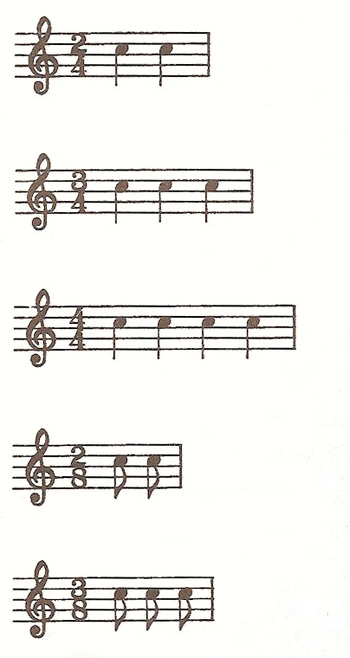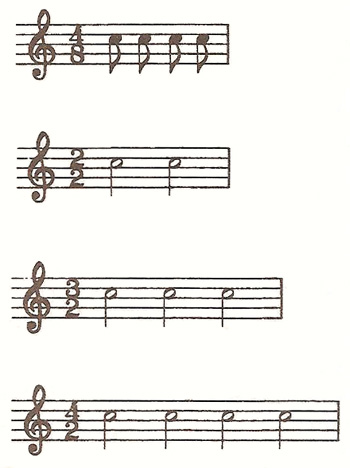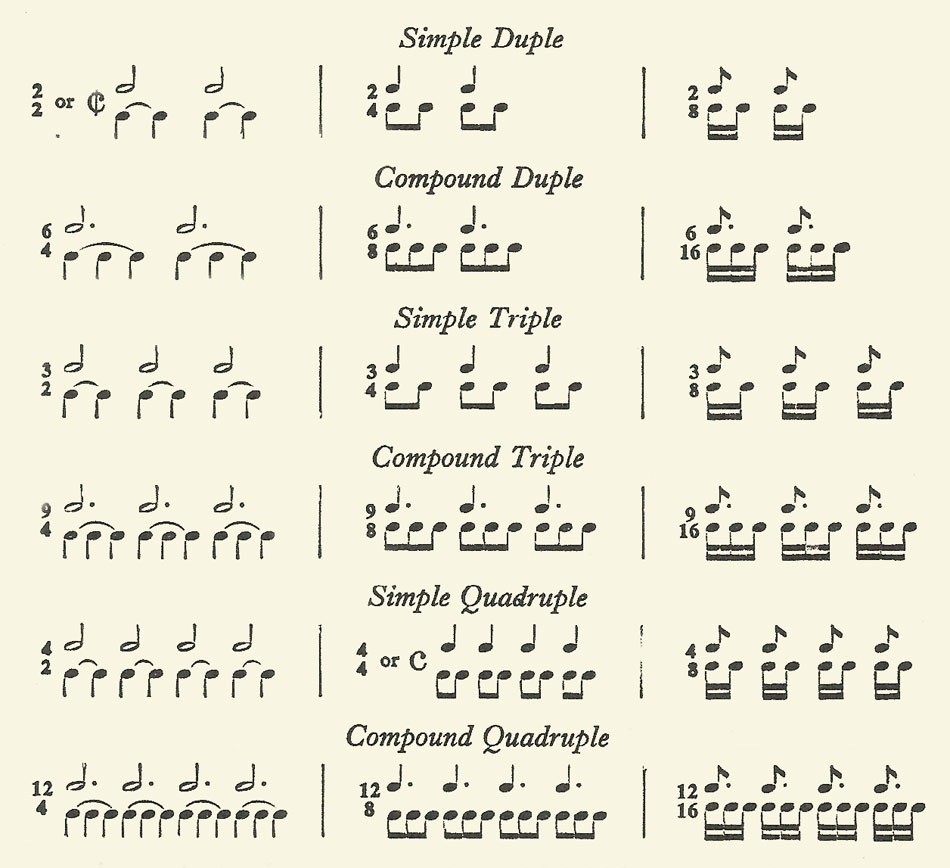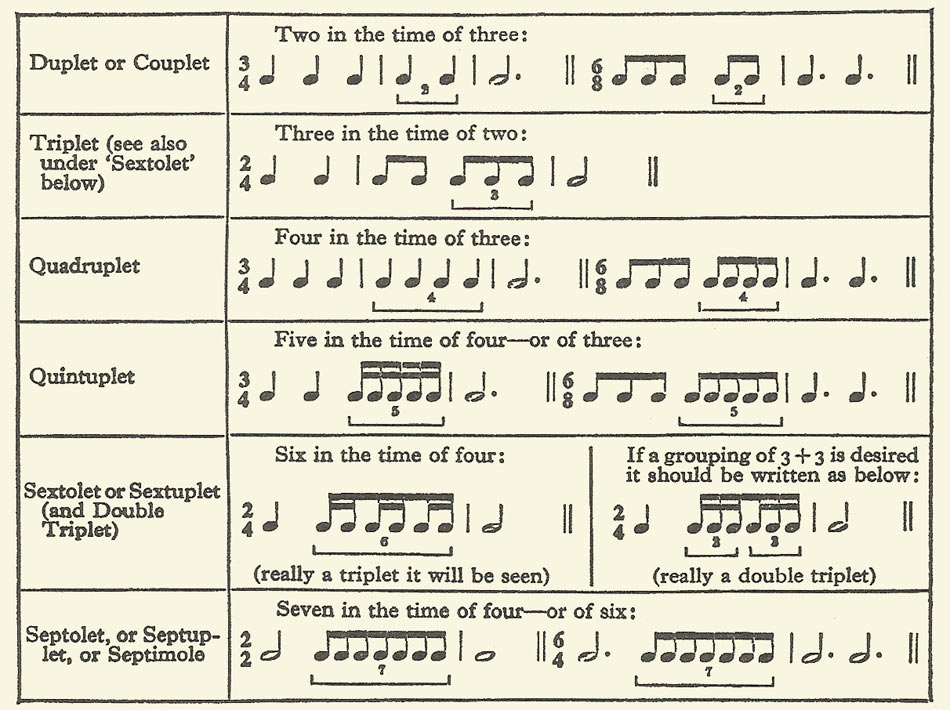time signature


Simple time signatures. From top to bottom: (1) two quarter-note beats per bar; (2) three quarter-note beats per bar; (3) Four quarter-note beats per bar; (4) two eighth-note beats per bat; (5) three eighth-note beats per bar; (6) four eighth-note beats per bar; (7) two half-note beats per bar; (8) three half-note beats per bar; (9) four half-note beats per bar.

Various time signatures.

Irregular_rhythmic groupings.
A time signature consists of two numbers written one over the other, like a fraction, on the stave at the beginning of a piece of music which tells how many beats are in a bar and how long each beat should last.
The simplest time signature is 4/4, called four-four time, and often abbreviated to C, for "common time". In this time signature, there are four beats to the bar, and each beat has the time value of a quarter-note (crotchet) – since it lasts for one quarter of a bar. Music in 2/4 time has beats of the same value (quarter-notes) but has only two of them in each bar. It is therefore essentially the same as 4/4 but with twice as many bars. The only difference is in the feel produced by the way the music is counted and played.
Besides 4/4 time, the most common time signature is 3/4. In 3/4 time (also called triple time or waltz time), there are three beats to the bar, and each beat has the time value of a quarter-note.
All time signatures based on "duple", "triple", or "quadruple" time are called simple time signatures.
Compound time
If the pulse of a piece of music is not felt as single beats but as groups of three beats, it is said to be in compound time. Take, as an example, 2/4 time played in groups of threes: each of the two beats in a bar of 2/4 is divided into three beats. This now produces six beats to a bar, and the time signatures that describe this are 6/4 and 6/8. In the same way, 3/4 time played in three groups of threes becomes 9/4 or 9/8, and 4/4 time played in four groups of threes becomes 12/4 or 12/8. These groups of three beats are called triplets.
Asymmetric time
When music has five, seven, or eleven beats in a bar, it is said to be in asymmetric time – since these numbers are not divisible by two or three. However, accents still tend to be placed on the beats to form them into groups of two, three, or four which then add up to the required five, seven, or eleven. This means that 7/4 time, for example, can be played as a group of three plus a group of four, as a group of four plus a group of three, or as a group of two plus a group of three plus another group of two. The way the beats are subdivided should follow the musical phrase and the accents on individual notes. An 11/8 bar can be counted as three groups of three beats followed by a group of two, with a pulse or emphasized beat felt at the start of each beat.
Comparison of time signatures
Each simple time has a corresponding compound time. The beat in the simple times if of the value of a plain note, whereas in compound time it is the value of a dotted note. In other words, the beat-note value in simple time is divisible into halves, quarters, etc., and that in compound times into thirds, sixths, etc. The grouping of notes in a bar (measure) by means of the hooks of their tails (when they have them) should accord with these divisions as shown below.
If the time signature is regarded as a fraction it is to be understood in terms of whole notes; e.g. 3/2 = three halves of a whole tone; 6/4 = six quarters of a whole note, and so on. But note the difference between 3/2 and 6/4 (which are obviously the same time duration per measure, yet differ in grouping and hence in rhythmic effect.) And so with 3/4 and 6/8, and 3/8 and 6/16. On the other hand, between 2/2 and 4/4, 2/4 and 4/8, etc., there is little difference.
Occasional signatures other than those shown are encountered, for example, 8/4 in one of Bach's Partitas (in effect each bar can be considered two bars of 4/4).
Mixed bars of 2/4 + 3/4 or 3/4 + 2/4 (quintuple time) occur and are shown as 5/4; mixed bars of 4/4 + 3/4 or 3/4 + 4/4, shown as 7/4, and so on. There is, indeed, nothing to prevent a composer inventing any time signature that he feels will help them express the rhythm of any passage.


